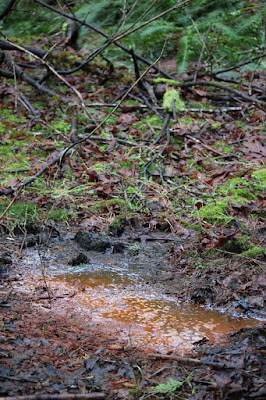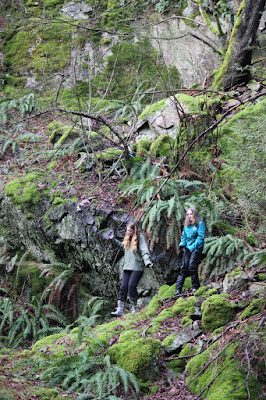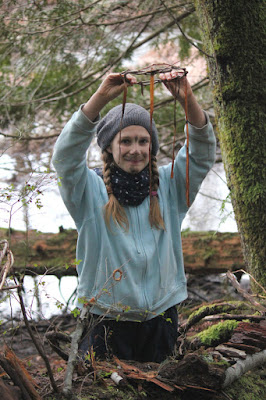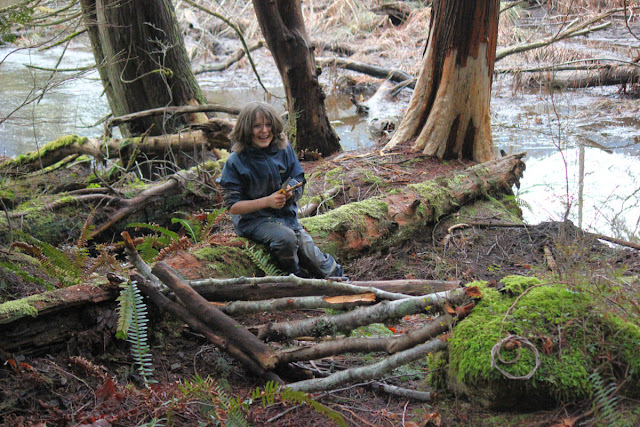
 Recently one of my teen groups took an interest in harvesting
wild clay, and decided to try refining it.
Recently one of my teen groups took an interest in harvesting
wild clay, and decided to try refining it.When we dig up the clay, it's not only quite crumbly, but also full of rocks, dirt, forest detritus and sand.
So over a period of a few weeks, these teens processed some of our local clay into a lovely smooth sculpting medium, and I thought I'd share the simple method they used.
We have easily-accessible clay all over our island, appearing in creeks and gullies, and dumped in shiny blue mountains when we excavate for wells and the like. This clay came from a very small creek. The group found mostly green clay, with a few pockets of a gorgeous pale blue-grey clay that was quite pure already. They used spoons, stones, a trowel and shovels to scrape their harvest from just above the water level, and found various benefits to each. It seems that the best way to collect the clay is to scrape it gently, dragging the side of a spoon, rock, or shovel along as you might drag your hand across bed linens to smooth them. The reason for this is that any digging into the clay removes chunks of crumbly clay that are quite difficult to grind or squish into a smooth lump. Scraping not only pushes water into the top layer, but pulls off such a small wet layer at a time that the resulting clay is much softer and doesn't require grinding or squishing to render it moldable.
Much of what the group collected was in fact crumbling and needed grinding, so once they had nearly half a bucket full, they used hands, a potato masher, and a shovel to grind it up until it was a nice heavy sludge. Some rocks and twigs were already coming out of it, and they removed those right away.
Then they left the clay slop in the bucket, undisturbed, where it settled out. After a week, we returned to find the rocks settled to the bottom, the sandiest clay above that, the smoother clay slip above that, and the water on top. At this point the group poured the water off the top, and the cleanest slip (about forty or fifty pounds worth) they poured into an old pillow case and hung up over the creek to settle again, and dry.
When we returned after another week, the clay hadn't dried as much as we hoped it would in the pillow case, but had settled nicely again, a layer of heavy sandy clay on the bottom, smooth sloppy clay in the middle, and slip on top. We easily scooped the best quality clay from the top of that in the bag and divided it among us.
Most of the group chose to use their sloppy clay to paint with, but some of us brought some home, where it will dry a little more (on a cloth-covered board) until it's a good working consistency.
Although this activity was, as usual, conceived by the group, I delighted in facilitating, and in seeing so many positive learning outcomes of the process. Most obviously, group working skills were developed, but so too were skills of problem-solving, improvisation, and process development. Working hands-on promotes a deeper understanding of the nature of this ecosystem, its constituents, and its changeability. When you separate out the layers of the forest floor you become familiar with it in a way that is deeper than mere description and images can convey. History, ecology, and engineering are integrated. And of course, when you're doing this exploratively, you are engaged through the process of genuine discovery. This activity was also a great opportunity to change a material that we regularly walk over without concern through a process of very simple refinement into a material that many people purchase in plastic bags. I think this not only strengthens our connection to wilderness, but also to our own ingenuity. Together these are part of what makes us human.



















































